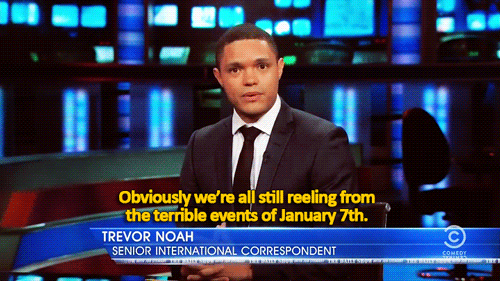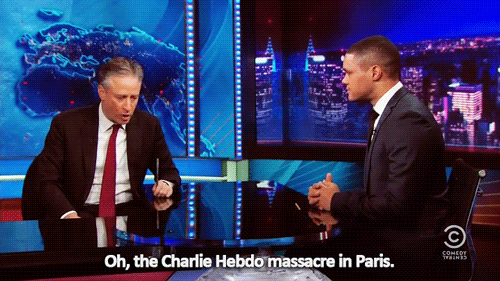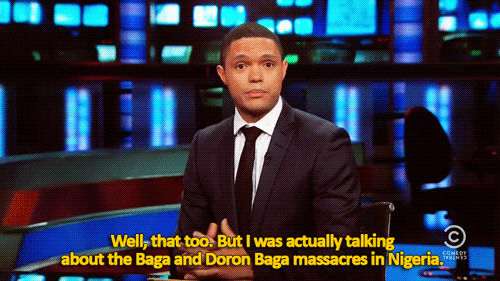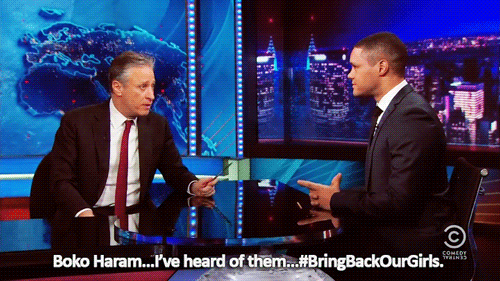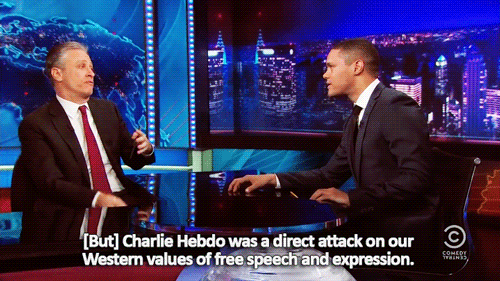Don't wanna be here? Send us removal request.
Photo

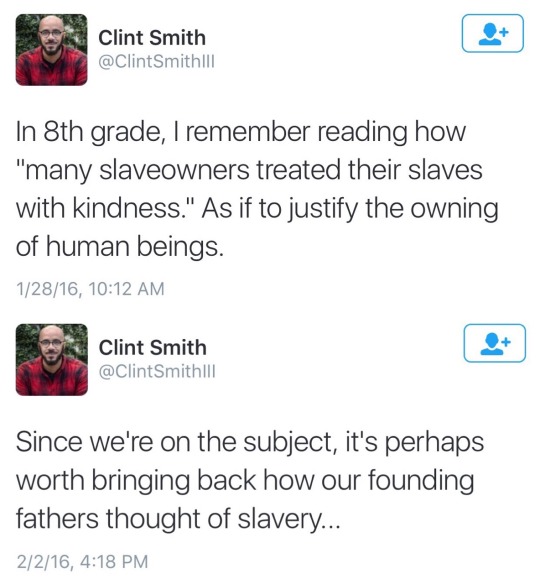

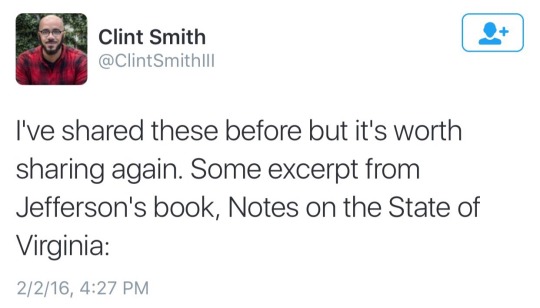



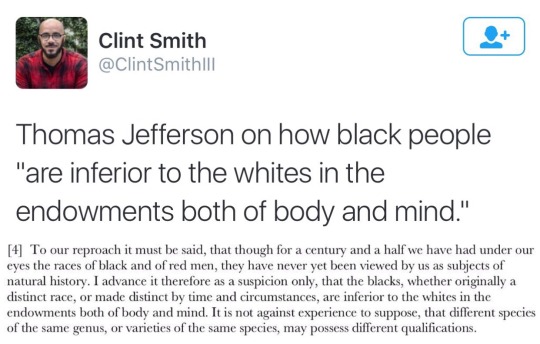

Dehumanizing stereotypes have existed in American culture from the very beginning. Centuries later, and racism remains the default justification for discrimination and brutality.
69K notes
·
View notes
Photo



Family, friends mourn slain Prince George’s County man Hollis Johnson
One week after Hollis Johnson was slain, his friends and family gathered at his parents’ Woodbridge, Va., home. They bowed their heads, linked their hands and prayed.
“Dry their weeping eyes and comfort their lonely hearts,” the Rev. Ronald Boykin entreated as nearly a dozen mourners stood in a circle. “Mend them, oh God, in their brokenness.”
Police found Johnson fatally shot Oct. 27 in the hallway of his Chillum, Md., apartment complex. As his family seeks the peace and strength to mourn, they are also looking for answers about the violent way their son, brother and friend died.
Johnson, whose nickname was “Hollywood,” was well-liked and had a diverse circle of friends, said those who knew him. In his 36 years, Johnson never got into trouble, his family said. He had no run-ins with the law except for the occasional traffic ticket, records show.
“We don’t know of an enemy he’s ever had in his life,” Johnson’s brother Phillip Lee, 45, said. “I don’t even know of a fight he’s ever got into. It’s baffling.”
The night Johnson died, his family said, he had just returned home from an upscale bar in Northwest Washington where he had watched the Redskins play the Dallas Cowboys on “Monday Night Football.” Johnson was talking to a friend on a cellphone as he entered his apartment building, his parents said. But before Johnson got to the door of his home, family said, the conversation stopped and the friend he was talking to heard what sounded like rustling.
A shot was fired at about 11:20 p.m., according to police and family. At least one neighbor and the person on the phone heard Johnson scream for help. After a neighbor called 911, Johnson was taken to a nearby hospital, where he later died.
Nothing was taken from Johnson, his family said. Prince George’s County police say they cannot release information about a suspect or motive because of the ongoing investigation into the slaying.
After the prayer circle in Johnson’s honor Monday, people sat around the dining room table, pulling up photos of him on their phones and sharing memories. They recalled his big personality, his talent in the kitchen and his love of sports, especially basketball.
Johnson, who was born in New York and raised in Virginia, first started playing basketball when he was 7. Well-respected coaches at basketball camps often commented on his ball-handling skills, according to Johnson’s father. His friends remembered the little boy who effortlessly dribbled the ball between his legs like a pro.
“I was amazed at how good he was at such a young age,” said Torrey Farrington, 37, who for the past three decades played basketball with Johnson and their best friends Aaron Burrell and Glen Hodge. “His ball skills, that’s what he’s known for.”
Johnson continued to play basketball into college, eventually landing a spot as a National Rookie League player for the old Washington Justice team. As a point guard, Johnson earned the nickname “Hollywood” for his flashy moves on the court.
His friends said when Johnson was younger, he dreamed of playing in the NBA, so he could get rich and take care of his mom. When the NBA didn’t work out, Johnson could have coached basketball for colleges in other parts of the country to advance his career and stay in the game, his father said. But his son wound up coaching briefly at the University of the District of Columbia and working at Freddie Mac instead.
Johnson wanted to stay close to family.
“He was a good kid, always was,” said his father, Brad Johnson, 64. “Never mean to anyone. He had street smarts, but he was kind and he turned out to be a good man.”
A $25,000 reward is being offered for information leading to an arrest and indictment in the case. Police are asking people to call 301-772-4925; to remain anonymous, call 866-411-TIPS (8477).
“I really hope that if someone knows something or knows this person, to say what they know so that person can come to justice,” Johnson’s mother, Pauline Johnson, 63, said. “You took a life, but for what reason?”
His sister, Mashiya Young, said she misses Johnson, who was a good brother and good uncle to her kids.
“Just the fact that someone could have taken a life so easily,” said Young, 44. “Just, why?”
“That’s the hard part,” her mother answered. “The why.”
Photographs:
Friends and family pray in the home of Pauline and Brad Johnson in Woodbridge on Monday. The couple’s son, Hollis Johnson, was murdered in Chillum last week. (Bonnie Jo Mount/The Washington Post)
Pauline Johnson, left, grieves as her husband, Brad Johnson, and daughter Mashiya Young recall memories of their son/brother Hollis Johnson at their home in Woodbridge, Va. Hollis Johnson was fatally shot last week in Chillum, Md. (Bonnie Jo Mount/The Washington Post)
Hollis Johnson, wearing the No. 23 jersey, was an avid basketball player and fan and played point guard for University of the District of Columbia. (Family photo)
4 notes
·
View notes
Photo

Family finds way to remember Hollis Johnson
Being a team player. Being involved in the community outside of basketball. Maintaining good grades.
Pauline Johnson knew her son Hollis lived his life that way, but she had no idea how much he had impacted others in the same way until last November 8 when over 1,000 people attended Hollis’ funeral service in Manassas.
Johnson, a 1996 Woodbridge High School graduate who went on to play basketball at the University of District of Columbia, died Oct. 27, 2014 at the age of 36 after being shot in his apartment building in Chillum, Md.
No one has been charged with Hollis’ killing and police believe Hollis did not know the shooter. But as Hollis’ family struggled to make sense of his death, some healing took place at the funeral and with the arrival of so many letters from people praising Hollis for his willingness to help someone else out, whether it was laying bathroom tile to expressing a kind word to lift someone’s spirit.
Hollis made such a difference on a former high school teammate by emphasizing the importance of always treating others with respect that the teammate named a play after Hollis in coaching one of his kid’s basketball teams.
As a thank-you for all the overwhelming support, Pauline had an idea. Why not use the money they received from donations and give it back in the form of scholarships to two deserving candidates in the community who represented the ideals espoused by Hollis.
“There was not a better way to honor him,” Pauline said.
Circumstances prevented the Johnson family from getting word out earlier about the availability of the scholarships, limiting the number of applicants to two. Beyond just dealing with Hollis’ death, Pauline’s husband Brad was diagnosed with colon cancer in early March. But the family established a scholarship committee with guidelines to find worthy recipients.
Candidates had to be accepted to an accredited college, receive a letter of recommendation and referral and have at least a 2.8 grade point average.
The committee members, which included Brad Johnson and two of Hollis’ former high school teammates, Torrey Farrington and Glen Hodge, agreed to award Hirk Williams III, a 2015 Stonewall Jackson graduate, and Keijon Honore, a 2015 Potomac graduate each a $2,000 scholarship. The ceremony will be held Sunday at the Johnson’s church, the First AME Church of Manassas.
Williams, a second-team all-Conference 8 forward, is headed to Allegheny College (Md.) in the fall, while Honore, an all-5A state point guard, is headed to Virginia Wesleyan.
With more time now to plan ahead and wanting this to be an annual event, Pauline said she hopes to draw from a bigger pool next year that will include candidates from Virginia, Maryland and Washington D.C
“This is a way to keep his memory alive,” Pauline said.
3 notes
·
View notes
Link
A Chillum, Md., man who was fatally shot last month may have unknowingly let his killer into the apartment building where he died, police said.
On Thursday, Prince George’s County police released surveillance video of the man they think killed 36-year-old Hollis Bradford Johnson on Oct. 27. The video shows a man in a hoodie approaching the entrance of the apartment building, where Johnson is holding the door open, police said.
After the stranger in the hoodie enters the building, Johnson was shot and the man ran out the door, authorities said. Police hope the video will generate leads in Johnson’s case.
Video released Thursday also shows a light-colored, four-door sedan speeding away from the apartment building. Detectives think the shooter was driving it. Police say the car they’re looking for has tinted windows and halogen headlights.
Police don’t think Johnson knew his killer, authorities said.
Johnson’s friends and family said they are still grieving. More than 1,000 people attended the funeral service, mother Pauline Johnson said.
“He was really well loved,” she said.
Glen Hodge said it was good to see the positive impact his friend had on the lives of other people at the funeral, but friends and family are struggling with what happened to Johnson, who worked at Freddie Mac as a financial adviser. They want to know who shot Johnson, and why.
“The hardest part right now is just getting some closure,” Hodge said.
Like police, Hodge hopes someone will come forward with information that will help solve the case.
“Detectives strongly believe there are citizens who have critical information in this case,” police said in a statement. “Tipsters never have to give their name and could be eligible for an up to $25,000 reward.”
Police are urging anyone with information to call 301-772-4925 or 866-411-8477.
2 notes
·
View notes
Photo



Friends mourn Manassas native slain in Maryland
Hollis “Hollywood” Johnson grew up in Manassas, where friends in the Westgate community knew him for his “loving soul,” positive outlook and prowess in basketball.
On Monday, Johnson, 39, was shot dead in his apartment building in Chillum, Md., Police are searching for his killer.
Police were called to Johnson’s apartment complex in the 1000 block of Chillum Road about 11:20 p.m., where they found him just outside his apartment, suffering from a gunshot wound. He was taken to a hospital where he died a short time later.
Detectives don’t have suspects or a motive.
“He was more than a friend to me, he was a brother, someone that I loved and he made many feel the same way,” said friend Hirk Williams II. “Hollis was never known to run with the wrong crowd and always had other successful acquaintances in his circle. I’ve never heard anyone utter a bad word or gesture about him.”
Johnson attended Stonewall Jackson High School in Manassas, and later transferred to Woodbridge High School. He played basketball at both schools.
After graduation, he moved to Maryland, attending Montgomery College before transferring to the University of D.C.
Though he lived in Maryland, he remained close with friends in Prince William County.
“Short in stature but a giant at heart, he also captured the hearts of more friends on the other end of the county,” Williams said.
Williams said Johnson had been out with friends watching the Redskins-Dallas game Monday night, but headed home early because he had to be at work early the next morning.
Witnesses reporting hearing two gunshots and a cry for help inside the apartment building. Then police arrived to find Johnson just outside his apartment.
The night after he was slain, friends in Westgate gathered for a candlelight vigil to remember Johnson.
“Gone to soon but will never be forgotten. Let’s bring his killer to justice,” Williams said.
Photographs:
Hollis “Hollywood” Johnson. Photo courtesy Hirk William II
Hollis “Hollywood” Johnson in his basketball playing days. Photo courtesy Hirk William II
Friends in the Westgate community hold a candlelight vigil in honor of Hollis “Hollywood” Johnson. Photo courtesy Hirk Williams II
7 notes
·
View notes
Video
1 year anniversary vigil held for Hollis Johnson; his killer still on the loose
At Westgate Elementary School in Manassas, friends and family of murder victim Hollis Johnson gathered quietly in a circle, lighting candles.
“I really thank God for who he was and what God did for him,” Johnson’s mother Pauline told the group.
Just over a year ago, on October 27, 2014, Johnson, 36, was gunned down in a hallway of his Chillum, Maryland apartment building.
Police believe moments before, walking inside, he unsuspectingly held the door open for his killer.
“He wasn’t cynical, so probably his first thoughts weren’t maybe, something’s up,” Johnson’s father Brad says.
“They said it was so fast, and the door was broke, so we don’t really know,” Pauline Johnson adds.
Since the shooting, authorities have released surveillance video of a suspect walking into the building, and the car he fled in.
Investigators believe robbery was the motive.
“it’s been a tough year,” Pauline Johnson said. “And this week has been very tough. Very tough this week.”
The word ‘love’ was used many times at this gathering, held on the basketball court where Johnson spent many hours with the people who would shape his life.
“That was our bond growing up and then it just grew into a friendship, recalls Glen Hodge, a close friend.
He and Johnson have known each other since they were eight years old.
Johnson would go on to excel on the court, and even had dreams of joining the NBA.
"He showed his love, even if he didn’t say it, you knew that he loved you, because he had a way of showing it, and how he appreciated you,” Hodge says.
That love was returned Thursday night, as people in that candlelit circle remembered Johnson amid laughter, and sometimes, tears.
“I believe the person who did this to Hollis, if they had known him, they would have never killed him like they did,” Pauline Johnson said quietly.
“Bottom line legacy,” Brad Johnson says. “It’s not so much about the ball and the accomplishments and all that, it’s about love.”
After a year-long investigation, police have been unable to find a suspect.
The family though, is convinced this case will be solved.
“I do believe we’re going to find answers and the person that did this,” Pauline Johnson says. “Something’s going to come up at some point in time, and we’ll know who did this horrific thing.”
2 notes
·
View notes
Photo










@harlembadguy:
Universal Heating and Cooling tried to charge me $1,200.00 for a $145.00 job.
On October 17, 2015 my furnace failed so I called Universal Heating and Cooling, located at 926 W. Main Street, Rochester, NY 14611 (Better Business Bureau (BBB) / Email / Facebook / Google+ / Twitter), to perform the repair.
Upon arrival the technician removed the cover to reveal and examine the internal workings of my furnace. After his “troubleshooting" was completed, he concluded my issue was with the exhaust motor and went on to say “after 17 yrs this is to be expected". He then called a supplier for a part quote and relayed to me the cost would be in the neighborhood of $450 adding he hated to be the bearer of bad news. Reluctantly, I agreed to the price and he left to go pick up the part leaving the furnace disassembled.
I received a call from him a few hours later only for him to tell me the wrong part was ordered; he was given a exhaust motor not an inducer as he ordered. I reminded him he did indeed order an exhaust motor and never mentioned the word inducer. He accepted the possible mix up, however, nothing could be done until Monday at this point.
On October 19, 2015 (Monday), a phone called was received from Craig (manager). He apologized about the mix up, then proceeded to say it was not the exhaust motor, but in fact the inducer and the cost for the part alone would be $1200 adding he hated to be the bearer of bad news (that’s exactly what the tech told me). Obviously unhappy and now suspicious with the sudden price increase, I declined further service and requested the technician return to reassemble my furnace as he found it.
The original technician returned and slapped together the furnace leaving screws partially installed and the filter on the floor. My mother paid him and he left with the advice of purchasing a new furnace. When I saw the condition in which the furnace was left I called Craig to complain about the lack of professionalism in reassembling my furnace. Craig agreed to send someone back, that someone being him. He arrived with an air of hostility asking what my problem was. I showed him how his representative left my home and asked if he would accept the same in his? He tightened down the screws in a huff and completely refused to reinstall the filter because was dirty. I told him dirty or not, I want everything as it was found. After a lot of back and forth he decided to reinstall the filter. He began to shove in the combs in a manner in which they were not designed to be installed. When I pointed this out and told him I was going to take pictures of his work, he became very angry and stormed out. I continued to take pictures of him and his vehicle and in his most professional pose he flipped me the bird.
Later that evening a company named Isaac Heating & Air Conditioning, located at 50 Holleder Parkway, Rochester, NY 14615, (BBB), sent Terry, a technician, who within ten minutes told me there was a pressure problem, rectified the issue and had my furnace up and running at a cost of $145.00 a long way from the $1,200.00 Craig wanted to charge me.
I would not let Universal Heating and Cooling take out my garbage let alone address a heating issue.
17 notes
·
View notes
Video
tumblr
ether/ˈiːθə/ - that shit that makes your soul burn slow
173K notes
·
View notes
Photo

We need your help. The Counted is a project by the Guardian – and you – to count the number of people killed by police and other law enforcement agencies in the United States throughout 2015. Please share this post to help more people across the country become aware of this project. Thank you!
See our interactive database, map and read the latest reports. Follow the conversation on special Facebook community page and on Twitter.
471 notes
·
View notes
Photo
New York destroyed a village full of African-American landowners to create Central Park
In the mid 19th century, New York City decided it needed a park. The city was growing fast, and everyone was conscious that this was one metric on which its rivals in Europe had the upper hand. In 1845, the editor of the New York Evening Post wrote a special Independence Day editorial, enviously praising Britain’s acres of parks, noting: “These parks have been called the lungs of London.”
Beyond Brit-envy, there was also the problem of the changing downtown area. Once the spot where fashionable ladies perambulated, it was becoming crowded with a new immigrant population, as well as noise and the smoke produced by industry. According to the Louise Chipley Slavicek, author of New York’s Central Park, the pro-park lobby were largely “affluent merchants, bankers and landowners”, who wanted a “fashionable and safe public place where they and their families could mingle and promenade”.
And so in 1851, Ambrose Kingsland, the city’s mayor, agreed to create one. By 1854, the city had chosen generous chunk of land in the centre of the island between what is now 59th and 106th streets, and construction on the park began. (It was later extended four blocks further north). The park is still there today, and everyone loves it: despite centuries of urban development, the park has remained an anchoring chunk of green space among the ever-denser Manhattan streets.
But there’s another side to the story. By the time the decision to create a park was made, there wasn’t enough empty space left in Manhattan. So the city chose a stretch of land where the largest settlement was Seneca Village, population 264, and seized the land under the law of eminent domain, through which the government can take private land for public purposes. Residents protested to the courts many times, against both the order and the level of compensation being offered for their land; eventually, though, all were forced to leave.
Two thirds of the population was black; the rest Irish. There were three churches and a school. And 50 per cent of the heads of households owned the land they lived on, a fact conveniently ignored by the media of the time, who described the population as “squatters” and the settlement as “n***er village”.
If you visited the park during its first 150 years of existence, you’d have no idea this village ever existed. It was only in 2001 that a small group called the Seneca Village Project pressured the city to install a small plaque; it describes the village as a “unique community”, which may well have been “Manhattan’s first prominent community of African American property owners”.
Since then the group, formed in the late nineties by a group of archaeologists and historians, has gone much further in bringing the village back into the cultural consciousness. In 2011, it managed to get permission to carry out an archaeological dig in Central Park, in order to find out more about the village and its residents.
Anthropologist Diana Wall was a founding member of the project. She told me that the excavation helped solidify information about the settlement, which even she herself had thought might be an “urban myth” when she first heard about it:
What I really like about historical archaeology is that you end up talking about families who have names; you can find out about aspects of their lives.
In fact, there’s actually quite a lot recorded about Seneca Viillage: the simple fact that many of the residents owned their land meant that the settlement generated a lot of paperwork. In future, Wall and her colleagues hope to make a film and book about the settlement and its residents. Every few years, the project gets a grant, usually from the National Science Foundation, which moves it a little closer to these goals.
So why does the demolition of a tiny village, razed in the 19th century to create a park that’s since been enjoyed by millions, matter? Wall places it in a much wider narrative, in which African Americans’ role in the nation’s early public life has been erased: “There’s been a denial that there were African Americans in New York City,” she says. In 1991, a slave burial ground was discovered during excavations to build a new office block north of City Hall – a reminder that nearly a quarter of the city’s population was black by the time of the American Revolution.
Then there’s the question of what might have been. At the end of the Central Park plaque, there’s an apparently innocuous line, noting: “The residents and institutions of Seneca village did not re-establish their long-standing community in another location”.
For Wall, this is key to the tragedy of Seneca Village. In an article on African-American communities in New York, she explains that, in the years after the 1827 slave emancipation, the safest way to live as an African American was in a separate, “enclave” community. As the village was destroyed, so was this safe haven for what she believes based on census records was a “black middle class”. She tells me now:
Many of the residents stayed relatively local to New York [after the village was demolished], but what they did not do was stay together. And that’s what’s so tragic: it was a community, and then the community was gone.
Another key part of the Seneca Village Project is an attempt to trace the genealogies of those who lived there, and find any living descendents. So far, unfortunately, this has been unsuccessful.
The continuance of a community made up of African-American landowners, bang in the middle of Manhattan, could have made for a very different New York – or even a very different United States – today. It’s a reminder that seemingly small decisions, like uprooting a certain community, or bulldozing a council estate, can change a city for good. You have to wonder whether all the mingling and promenading was worth it.
You can find out more about the Seneca Village Project here.



105 notes
·
View notes
Link
0 notes
Photo

Martin Luther King assassinated by US Government: King Family civil trial verdict
Coretta Scott King: “We have done what we can to reveal the truth, and we now urge you as members of the media, and we call upon elected officials, and other persons of influence to do what they can to share the revelation of this case to the widest possible audience.” – King Family Press Conference, Dec. 9, 1999.
Dr. Martin Luther King’s family and personal friend/attorney, William F. Pepper, won a civil trial that found US government agencies guilty in the wrongful death of Martin Luther King. The 1999 trial, King Family versus Jowers and Other Unknown Co-Conspirators, is the only trial ever conducted on the assassination of Dr. King. The King Center fully documents the case, with full trial transcript.
The King family’s attempts for a criminal trial were denied, as suspect James Ray’s recant of a guilty plea were denied. Mr. Ray said that his government-appointed attorney told him to sign a guilty plea to prevent the death penalty for his part in delivering the murder weapon for Dr. King’s assassination, and to prevent arrests of his father and brother as probable co-conspirators. Mr. Ray produced a letter from his attorney stating the promise that Mr. Ray would receive a trial. When Mr. Ray discovered that he was solely blamed for Dr. King’s assassination and would never receive a trial, the King family’s and Mr. Ray’s subsequent requests for a trial were denied.
The US government also denied the King family’s requests for independent investigation of the assassination.
Therefore, and importantly, the US government has never presented any evidence subject to challenge that substantiates their claim that Mr. Ray assassinated Dr. King.
US corporate media did not cover the trial or interview the King family, and textbooks omit this information. Journalist and author, James Douglass:
“I can hardly believe the fact that, apart from the courtroom participants, only Memphis TV reporter Wendell Stacy and I attended from beginning to end this historic three-and-one-half week trial. Because of journalistic neglect scarcely anyone else in this land of ours even knows what went on in it. After critical testimony was given in the trial’s second week before an almost empty gallery, Barbara Reis, U.S. correspondent for the Lisbon daily Publico who was there several days, turned to me and said, “Everything in the U.S. is the trial of the century. O.J. Simpson’s trial was the trial of the century. Clinton’s trial was the trial of the century. But this is the trial of the century, and who’s here?”
For comparison, please consider the media coverage of O.J. Simpson’s trials:
“Media coverage of the Simpson trial, which began in January 1995, was unlike any other. Over two thousand reporters covered the trial, and 80 miles of cable was required to allow nineteen television stations to cover the trial live to 91 percent of the American viewing audience. When the verdict was finally read on October 3, 1995, some 142 million people listened or watched. It seemed the nation stood still, divided along racial lines as to the defendant’s guilt or innocence. During and after the trial, over eighty books were published about the event by most everyone involved in the Simpson case.”
The overwhelming evidence of government complicity introduced and agreed as comprehensively valid by the jury includes:
US 111th Military Intelligence Group were at Dr. King’s location during the assassination.
20th Special Forces Group had an 8-man sniper team at the assassination location on that day.
Usual Memphis Police special body guards were advised they “weren’t needed” on the day of the assassination.
Regular and constant police protection for Dr. King was removed from protecting Dr. King an hour before the assassination.
Military Intelligence set-up photographers on a roof of a fire station with a clear view to Dr. King’s balcony.
Dr. King’s room was changed from a secure 1st-floor room to an exposed balcony room.
Memphis police ordered the scene where multiple witnesses reported as the source of shooting cut down of their bushes that would have concealed a sniper.
Along with sanitizing a crime scene, police abandoned investigative procedure to interview witnesses who lived by the scene of the shooting.
The rifle Mr. Ray delivered was not matched to the bullet that killed Dr. King, and was not sighted to accurately shoot
The King family believes the government’s motivation to murder Dr. King was to prevent his imminent camp-in/occupation at Washington, D.C. until the Vietnam War was ended and those resources directed to end poverty and invest in US hard and soft infrastructure.
This conclusion is consistent with US history, past and recent, for US “leaders” to lie and kill for wars of choice. These lies are then “covered” by corporate media in news and history texts.
Please watch this six-minute video of the evidence from the trial, and this eight-minute video on the FBI’s disclosures of covert operations against Dr. King, including confirmation from his closest friends and advisors.
Coretta Scott King, Dr. King’s wife, is certain of the evidence after 30 years of consideration from the 1968 assassination to the 1999 trial:
“For a quarter of a century, Bill Pepper conducted an independent investigation of the assassination of Martin Luther King, Jr. He opened his files to our family, encouraged us to speak with the witnesses, and represented our family in the civil trial against the conspirators. The jury affirmed his findings, providing our family with a long-sought sense of closure and peace, which had been denied by official disinformation and cover-ups. Now the findings of his exhaustive investigation and additional revelations from the trial are presented in the pages of this important book. We recommend it highly to everyone who seeks the truth about Dr. King’s assassination.” — Coretta Scott King.
The US Department of Justice issued a report in 2000 that explains their investigation into their own possible guilt in the assassination found no evidence to warrant further investigation. Dr. King’s son issued the following statement rebuking a “self-study” rather than the independent investigation the King family assert the evidence demands:
“We learned only hours before the Justice Department press conference that they were releasing the report of their results of their “limited investigation,” which covered only two areas of new evidence concerning the assassination of Dr. King. We had requested that we be given a copy of the report a few days in advance so that we might have had the opportunity to review it in detail. Since that courtesy was not extended to us, we are only able at this time to state the following:
1. We initially requested that a comprehensive investigation be conducted by a Truth and Reconciliation Commission, independent of the government, because we do not believe that, in such a politically-sensitive matter, the government is capable of investigating itself.
2. The type of independent investigation we sought was denied by the federal government. But in our view, it was carried out, in a Memphis courtroom, during a month-long trial by a jury of 12 American citizens who had no interest other than ascertaining the truth. (Kings v. Jowers)
3. After hearing and reviewing the extensive testimony and evidence, which had never before been tested under oath in a court of law, it took the Memphis jury only one (1) hour to find that a conspiracy to kill Dr. King did exist. Most significantly, this conspiracy involved agents of the governments of the City of Memphis, the state of Tennessee and the United States of America. The overwhelming weight of the evidence also indicated that James Earl Ray was not the triggerman and, in fact, was an unknowing patsy.
4. We stand by that verdict and have no doubt that the truth about this terrible event has finally been revealed.
5. We urge all interested Americans to read the transcript of the trial on the King Center website and consider the evidence, so they can form their own unbiased conclusions.
Although we cooperated fully with this limited investigation, we never really expected that the government report would be any more objective than that which has resulted from any previous official investigation.”
Let’s summarize: Under US Civil Law, covert US government agencies were found guilty of the assassination of Dr. Martin Luther King, Jr. Dr. King was the leading figure of the Civil Rights Movement, a Nobel Peace Prize winner, and widely recognized as one of the world’s greatest speakers for what it means to be human. The family’s conclusion as to motive was to prevent Dr. King from ending the Vietnam War because the government wanted to continue its ongoing covert and overt military operations to control foreign governments and their resources.
It is therefore a factual statement that under US Civil Law, the US government assassinated Dr. King.
We also need to consider the lack of coverage by US corporate media of this compelling evidence, trial verdict, and King family testimony from over 30 years’ analysis of the facts. Recall the evidence of US corporate media reporting being infiltrated by CIA agents to propagandize Americans’ access to information. This included the Director of the CIA’s admission to Congress that they have over 400 agents working in corporate media to make the US public believe what the CIA wants them to believe.
In 2006, George Washington University used a Freedom of Information Act request to obtain the US military’s “Information Operations Roadmap.” This formerly secret and approved document details present US government strategies to generate propaganda, and then attack Internet alternative media that provides dangerous facts and discussion. The military promoted the term, “Fight the net.”
Although I won’t enter the burden of proof here, you may know that there are similar and related bodies of evidence that the US government assassinated other American leaders. The 1975 Senate Church Committee disclosed that the US government initiated and helped assassination attempts on multiple foreign heads of state.
Author’s note: Examiner.com has blocked public access to my articles on their site (and from other whistleblowers). Some links in current articles are therefore now blocked. If you’d like to search for those articles other sites may have republished, use words from the article title within the blocked link. I’ll update as “hobby time” allows; including updating my earliest work from 2009 to 2011 (my blocked author pages: here, here).
715 notes
·
View notes
Photo









Before and After Colonisation
The British, referred to the ingenuity and resourcefulness of the Congolese people as ‘Primitive’ because they respected the land they lived on and understand the harmony that mankind and nature must abide by. In cultivating Palm trees, they only took what was needed for themselves to feed their families, and constructed a simple but efficient system of refining palms into oil and other products for many different purposes.
The British observed and studied their technique, in their greed they decided to make it into a mass production enterprise, one explorer stated “buried in their jungle, they were too backward to realise the vast inheritance it had to offer, the untapped resources of their vast continent…wealth lay wasting”
It is by this same so called ‘primitive’ invention that they sought out to make profit from Palm (Palm Trees only grow in Tropical climates so the English knew nothing on how to cultivate and process it) they took the invention of the Congolese and enforced their system of capitalism in their country to fund their industrial ‘revolution’, producing more than was necessary, raping the land, causing major issues such as deforestation, habitat degradation, climate change, animal cruelty and for the vast majority if not all of the profits to be enjoyed in their own countries.
They then spread propaganda wordlwide; ‘the savages lived in darkness’ ‘we found them swinging from trees’ ‘we saved them from themselves’, ‘we civilised them’ and etc
They made it larger scale, a little tweak there, a little alteration here, and the white man has the audacity to herald himself as an inventor.
Making alterations to a pre-existing system/product whilst keeping the core technique does not make you an inventor. Its called Plagiarism.
5K notes
·
View notes
Photo
A tremendous loss to the DC Metro area. If you knew him you loved him. An amazing person and fierce competitor. A born winner gone way too soon. We love and miss you Hollis aka Hollywood aka Wood aka Who's the Dude aka The Latest & The Greatest forever my friend.

5 notes
·
View notes
Photo

I friend of mine were having a chat and she brought up that the US Government was found guilty of the murder of Martin Luther King in 1999 and this year this info started to re-surface and multiple people were taking extensive efforts to make sure the information stayed hidden. I did some research and here’s what I found.
In 1999 (a year after the person convicted of the assassination, James Earl Ray, died) the United States government was taken to court by King’s family. With a very short trial, due to the overwhelming evidence against the government, they were found guilty. King’s family was awarded $100 and his widow was quoted saying this.
There is abundant evidence of a major high level conspiracy in the assassination of my husband, Martin Luther King, Jr. And the civil court’s unanimous verdict has validated our belief. I wholeheartedly applaud the verdict of the jury and I feel that justice has been well served in their deliberations. This verdict is not only a great victory for my family, but also a great victory for America. It is a great victory for truth itself. It is important to know that this was a SWIFT verdict, delivered after about an hour of jury deliberation. The jury was clearly convinced by the extensive evidence that was presented during the trial that, in addition to Mr. Jowers, the conspiracy of the Mafia, local, state and federal government agencies, were deeply involved in the assassination of my husband. The jury also affirmed overwhelming evidence that identified someone else, not James Earl Ray, as the shooter, and that Mr. Ray was set up to take the blame. I want to make it clear that my family has no interest in retribution. Instead, our sole concern has been that the full truth of the assassination has been revealed and adjudicated in a court of law. As we pursued this case, some wondered why we would spend the time and energy addressing such a painful part of the past. For both our family and the nation, the short answer is that we had to get involved because the system did not work. Those who are responsible for the assassination were not held to account for their involvement. This verdict, therefore, is a great victory for justice and truth. It has been a difficult and painful experience to revisit this tragedy, but we felt we had an obligation to do everything in our power to seek the truth. Not only for the peace of mind of our family but to also bring closure and healing to the nation. We have done what we can to reveal the truth, and we now urge you as members of the media, and we call upon elected officials, and other persons of influence to do what they can to share the revelation of this case to the widest possible audience.
This is especially disappointing because with a quick google search of “who killed MLK” a short google-provided bio of James Earl Ray pops up
when there has been proof for 15 years now that US government indeed killed Dr. King. Yet, to this day, America waves his words and what he stood for as the symbol of our country (not to say his words shouldn’t be praised, just that the people who murdered him shouldn’t be using him to feed their ego).
You can read more about the trial here. And if anyone tries to disprove this news source, google “us government killed MLK” and you’ll have a plentiful of articles from 1999-2014 covering this topic more than I ever could in a tumblr post.
PLEASE SPREAD THIS AROUND. I was taught ever since elementary school what James Earl Ray was guilty of Martin Luther King’s death. As his wife stated, all they wanted to get out of this trial was recognition of what really happened, and the fact that all they got was $100 and a pat on the back sickens me. People need to know the truth.
109K notes
·
View notes

